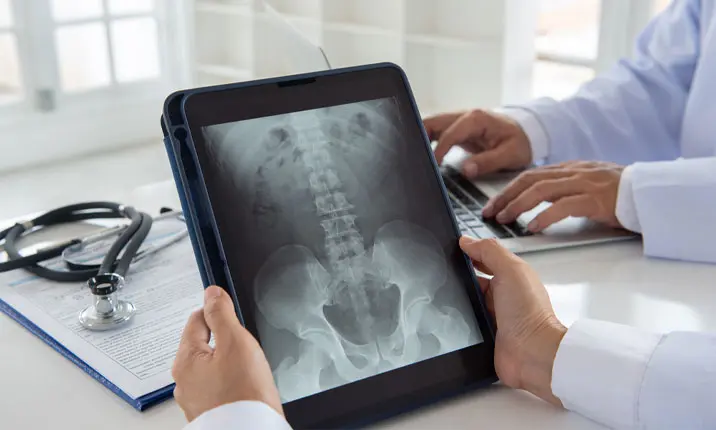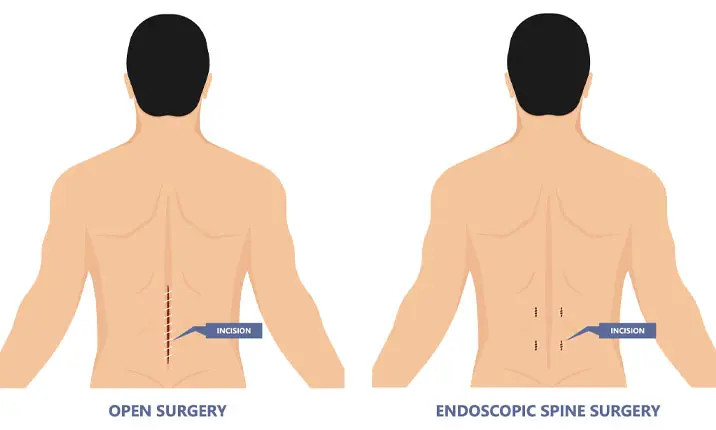Lower back pain
Lower back pain is the most common symptom prompting people to consult their doctors. This can be due by a variety of causes, such as:
- Degenerative disc disease from previous injury, surgery or excessive sitting
- Injury to the muscles or ligaments due to sports or heavy lifting
Injury to the bone due to high energy trauma, such as when there is a great impact to the body after a fall from height or vehicle accident
- Spinal instability and stenosis (narrowing of the spaces within the spine, most commonly due to wear and tear)
- Spinal joint inflammation from excessive standing and walking
- Other less common causes like infection, cancer originating from the spine, or metastasis (cancer spreading to the spine from somewhere else in the body)
Lower back pain that persists for more than a month is termed chronic. Chronic lower back pain may be accompanied by other symptoms such as pain that shoots down the leg (sciatica), a pins and needles sensation, numbness and weakness of the legs. There may also be limitation in walking due to leg pain or cramping (claudication).
How is lower back pain diagnosed?
To determine the cause of your lower back pain, the doctor will first take a detailed medical history and perform a thorough physical examination. The doctor may also request for diagnostic tests, such as X-rays, computerised tomography (CT) scan, magnetic resonance imaging (MRI) or blood tests.
Once the diagnosis is confirmed, the doctor will advise you on the appropriate treatment. There is no "textbook" method in determining treatment because no two patients are the same. The doctor will take into consideration your age, occupation, lifestyle, existing medical conditions, as well as the duration and severity of the symptoms.
What are the treatment options for lower back pain?
Many patients think that surgeons will recommend surgery for their low back pain. However, in 90% of the cases, conservative management is recommended and can improve symptoms.
Conservative or non-surgical management includes:
- Activity and lifestyle modifications
- Acupuncture
- Ergonomic changes to daily activities (rearranging objects and spaces to make movement and body position more comfortable)
- Medication
- Physiotherapy
- Posture changes
- Weight loss
More invasive procedures such as epidural steroid injection, nucleoplasty (reduction of disc pressure and bulging disc through radiofrequency) and surgery are usually recommended only when conservative management fails.
What type of surgery is done for lower back pain?
There are many types of surgery performed for low back pain, depending on the main cause. Common surgical options include decompressive surgery and spinal fusion.
Decompressive surgery can be performed using various ways. The most common techniques include discectomy, which is the removal of a portion of the disc, and laminectomy, which is the removal of the bony arch of the spine (called the lamina).
Spinal fusion involves the joining together of 2 or more vertebrae to stabilise the spine. These surgical techniques can be performed through open surgery or with minimally invasive techniques.
What is minimally invasive surgery of the spine?
In minimally invasive spine surgery, the surgeon makes small incisions in your skin and inserts the necessary surgical instruments through that small incision. The surgeon may use a video camera to visualise the affected area of the spine, and small surgical instruments to perform the procedure.
Compared to open surgery, the benefits of minimally invasive surgery (MIS) include:
- Faster recovery and return to normal function
- Less blood loss
- Less post-surgery pain and need for pain relievers
- Less risk of infection
- Less scarring
- Shorter hospital stay
Although the risks are lower compared to open surgery, the possible complications of MIS include infection, blood loss, and adverse reactions to the anaesthetic drugs. There is also a small possibility that the minimal invasive spine surgery is not successful and you would need to repeat the procedure or an open surgery.
The duration of the procedure varies depending on the patient's condition and doctor's skill. In general, MIS can be performed in 1 – 2 hours compared to open surgery that can last for several hours. Most patients can leave the hospital the next day after MIS.
The success rate of this procedure is affected by many factors, including surgeon expertise, equipment, and patient's condition.
When should I see a doctor?
It is best to see a doctor if you have persistent or severe pain in your lower back, or if you have lower back pain with other associated symptoms such as leg pain, numbness or weakness.
Make an appointment with an orthopaedic specialist to get your lower back pain diagnosed and treated.














